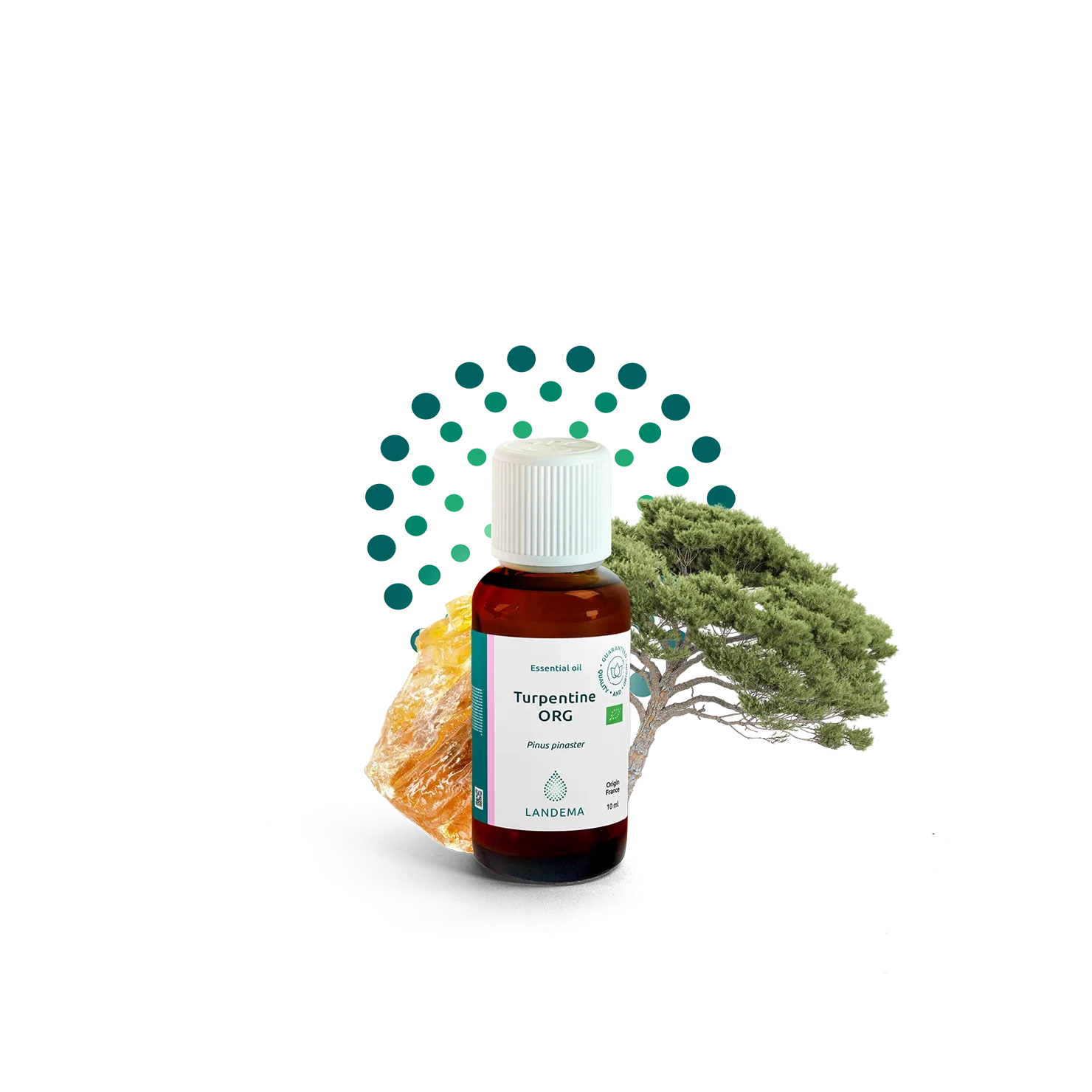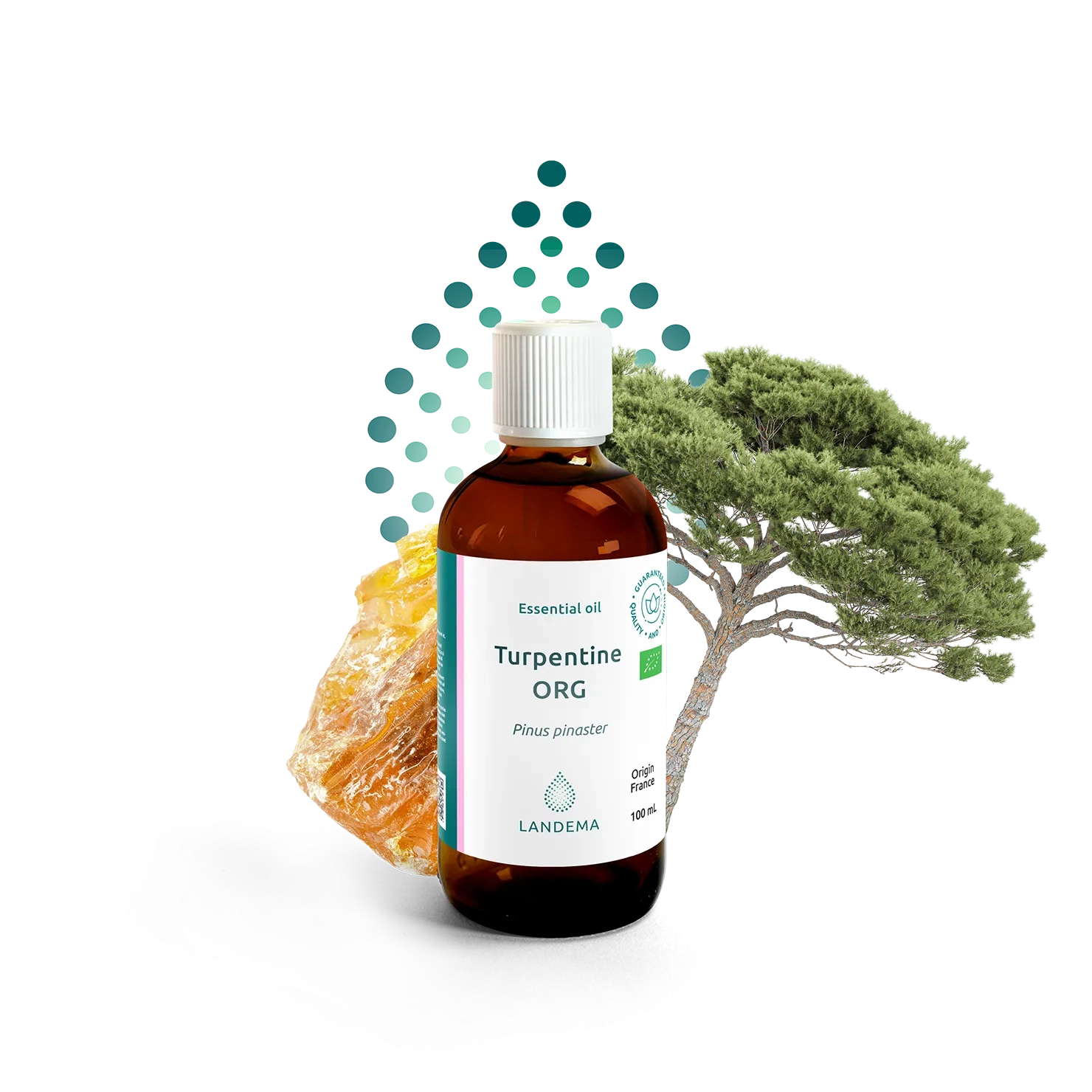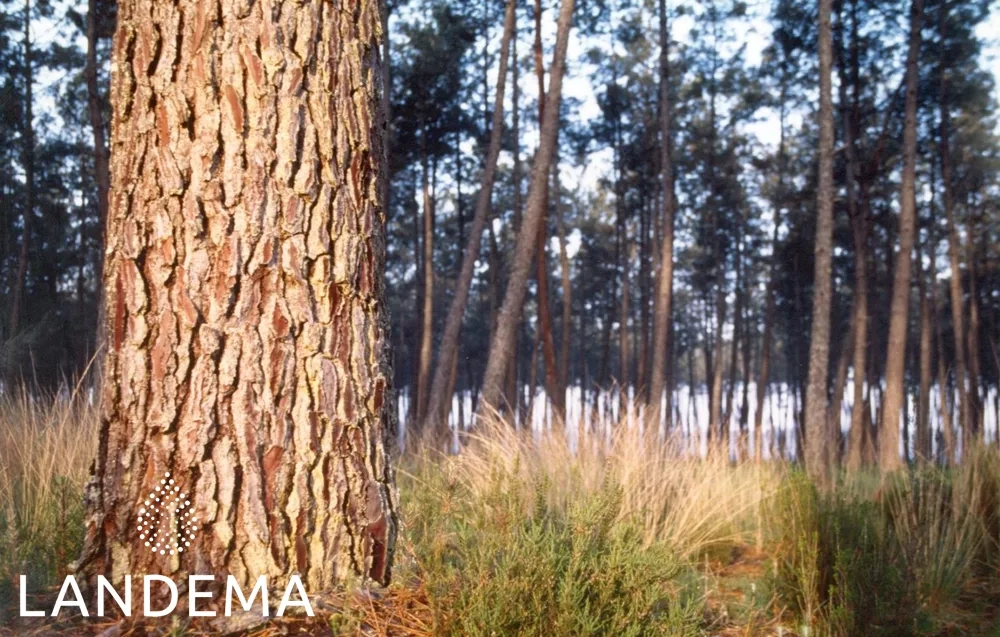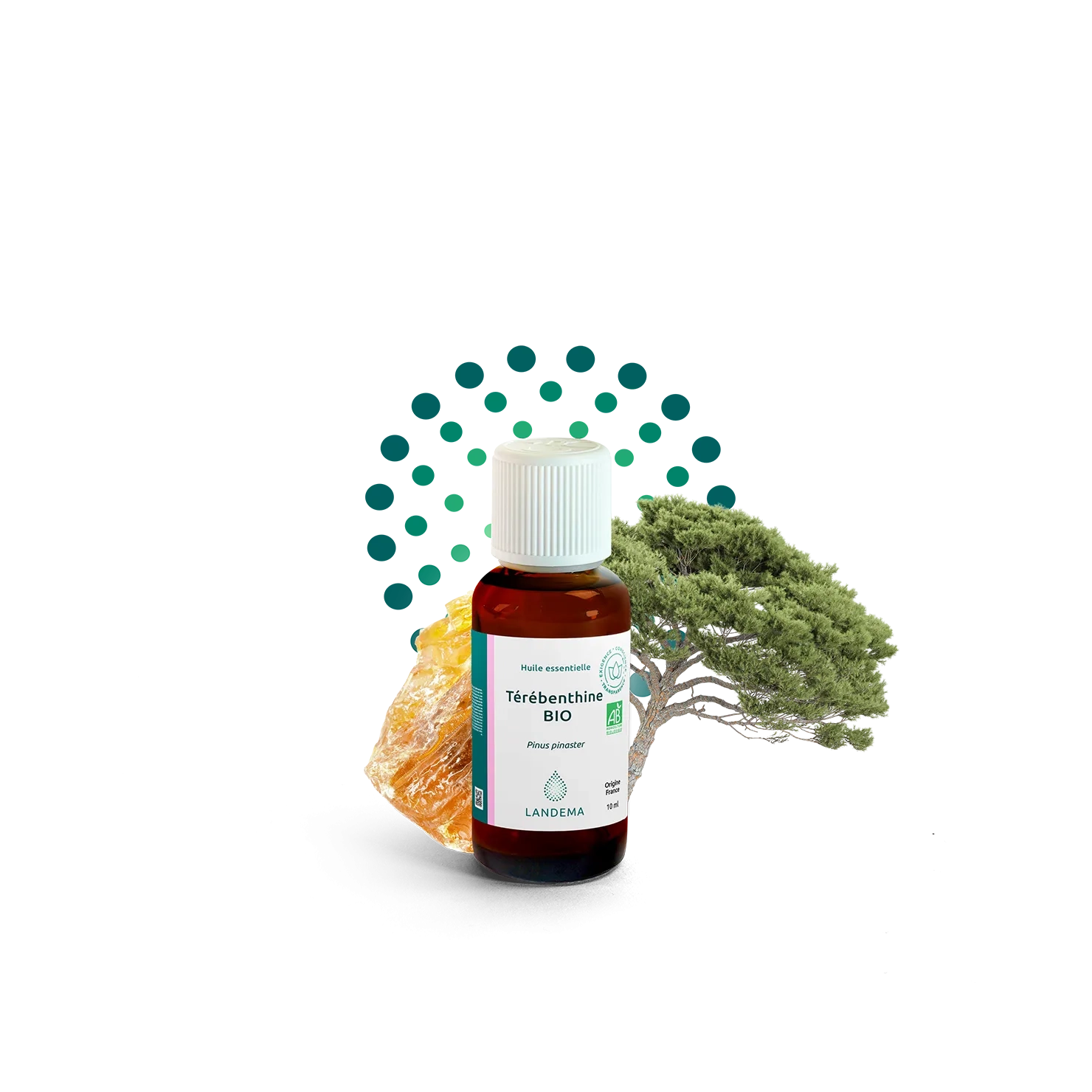Turpentine ORG
Description
Derived from the resin of the maritime pine (Pinus pinaster), turpentine is obtained through a traditional tapping process that does not involve cutting down the trees. The essential oil is then extracted by steam distillation.
Turpentine essential oil releases a fresh, resinous, and woody scent, typical of conifers. It is traditionally known for its purifying and toning effect, making it a sought-after raw material in revitalising formulations.
It is commonly used in:
- purifying creams and gels for oily skin,
- facial masks for blemish-prone skin,
- toning massage oils,
- natural deodorant formulas.
- Certifications: ORGANIC : Coming from organic farming, certified by ECOCERT FR-BIO-01
- Composition: 100% pure, natural and integral. Chemotyped.
- Country of harvest: FRANCE
- Country of manufacturing: FRANCE
- Landema commitment: Produced in our distilleries
- Olfactory notes: woody rising resinous
- Part of the plant: Resin
- Quality and origin guaranteed: botanically and biochemically identified, a certificate of analysis provided with each purchased product.
- Controlled and packaged in our workshops in France.
Production
Harvest
Turpentine is an oleoresin obtained naturally by incising the bark of certain conifers, in particular the maritime pine (Pinus pinaster), a species widely cultivated in Southern Europe, Asia and the Americas. This pine, recognizable by its straight trunk and high resilience, is prized not only for its wood, but also for its aromatic resin.
Harvested since Antiquity, turpentine was used for its many virtues: it was an ingredient in medicinal balms, antiseptic preparations and fumigation products, notably to purify the air in enclosed spaces. Its use was particularly widespread in Greek and Roman medicinal traditions.
Today, turpentine is still harvested using traditional methods, based on gemmage: a process that respects the tree and involves making cuts in the bark to release the resin, without felling the tree. Gemmage had disappeared in the Landes region, and is now being revived thanks to the involvement of local partners, who also enable us to obtain certified organic quality.
This resinous raw material is then distilled to produce organic turpentine essential oil.
Manufacturing
Our organic turpentine essential oil is 100% harvested and produced in the Landes region of France, in a way that respects the environment and natural resources. 100% natural, the essential oil is extracted by steam distillation from maritime pine (Pinus pinaster) resin, a traditional method that preserves all the aromatic and therapeutic properties of turpentine.
The steam distillation process involves heating the resin so that the steam carries off the volatile aromatic compounds. This steam is then condensed to obtain the pure essential oil. This extraction technique is both gentle and efficient, guaranteeing optimum quality of the essential oil while preserving its natural properties.
Harvesting calendar :
- jan
- fev
- mar
- avr
- mai
- jui
- jul
- aou
- sep
- oct
- nov
- dec
Application
Main areas of application :
Cosmetic Aromatherapy - Parapharmacy Household Perfumery Spa - Well-being Veterinary
 Cosmetics
Cosmetics
Turpentine essential oil is traditionally used in cosmetic formulations for its purifying and toning properties. Its freshness and resinous scent make it a valued ingredient in products designed to purify the skin, as well as in products with stimulating properties.
It can be incorporated into:
- Purifying creams and gels
- Masks for oily or blemish-prone skin
- Massage oils
- Deodorants
 Homecare - Household
Homecare - Household
Terebentine has long been known for household and industrial uses. It is an alternative to petrochemical products. Natural turpentine is traditionally used for:
- Natural solvent: thinner for paints, varnishes and inks
- Cleaner/degreaser for brushes, metal surfaces and tools
- Manufacture of deodorizing and sanitizing products
- Fluidifier for waxes and oils (wood polishes)
 Perfumery
Perfumery
Odor: fresh, resinous, woody, fairly raw, close to pine resin.
Typical uses:
- In "forest" room fragrances or to reinforce the "terpene" aspect of a woody accord.
- In technical compositions and maintenance products: scented detergents, cleaners, room sprays, where it reinforces freshness and olfactory impact.
- In fine fragrances: rarely, because of its strong, volatile scent. Sometimes used as a solvent or fixative.
 Aromatherapy :
Aromatherapy :
Turpentine essential oil is composed almost exclusively of monoterpenes, which give it its properties:
- Alpha-pinene 70% to 79
- Beta-pinene 13% to 19
Traditionally used externally, generally for the respiratory system, or for specific skin preparations (e.g. "sports" treatments) or in aromatic baths (very diluted). Internal use is strongly discouraged.
As it is a powerful ingredient that presents risks, it is strongly recommended to follow the advice of a health professional.
Technical and regulatory
Detailed information :
| Botanical name : | Pinus pinaster Solander in Aiton |
| CAS EINECS : | 8006-64-2 |
| CAS TSCA : | 8006-64-2 |
| CE number : | 232-350-7 |
| COE : | 340 |
| Commercial designation : | Turpentine Organic essential oil France |
| Composition : | 100% pure, natural and integral. Chemotyped. |
| Country of harvest : | FRANCE |
| Country of manufacturing : | FRANCE |
| Declared domestic use : | Ingredient |
| FDA : | 172.510 |
| FEMA GRAS : | 3089 |
| Flash point (°C) : | 34 |
| INCI Cosing : | 100% TURPENTINE |
| Internal reference : | B896 |
| Minimum shelf life (month) : | 36 |
| Part of the plant : | Resin |
| Product's Familly : | PINE |
| Registered in food inventories : | Yes |
| Regulated sale : | Non |
| Transport Data Dangerous Goods : | 3/III/1299 |
| Type of extract : | Essential oil |
Hazard statements :
H411
Toxique pour les organismes aquatiques, entraîne des effets néfastes à long terme.
H411
Toxic to aquatic life with long lasting effects.
H319
Provoque une sévère irritation des yeux.
H319
Causes serious eye irritation.
H317
Peut provoquer une allergie cutanée.
H317
May cause an allergic skin reaction.
H315
Provoque une irritation cutanée.
H315
Causes skin irritation.
H304
Peut être mortel en cas d'ingestion et de pénétration dans les voies respiratoires.
H304
May be fatal if swallowed and enters airways.
H302+H312+H332
Nocif en cas d'ingestion, de contact cutané ou d'inhalation.
H302+H312+H332
Harmful if swallowed, in contact with skin or if inhaled.
H226
Liquide et vapeurs inflammables.
H226
Flammable liquid and vapour.
Usage tips
Manual:
Fragrance ingredient: Maximum concentration : 2 drops per 10 ml of fragrance composition. Keep out of reach of children. Do not apply directly to the skin. Not recommended for pregnant or breast-feeding women, or by young children (under 6).
Consult our guides: storage and preservation methods and precautions for use
Description
Derived from the resin of the maritime pine (Pinus pinaster), turpentine is obtained through a traditional tapping process that does not involve cutting down the trees. The essential oil is then extracted by steam distillation.
Turpentine essential oil releases a fresh, resinous, and woody scent, typical of conifers. It is traditionally known for its purifying and toning effect, making it a sought-after raw material in revitalising formulations.
It is commonly used in:
- purifying creams and gels for oily skin,
- facial masks for blemish-prone skin,
- toning massage oils,
- natural deodorant formulas.
- Certifications: ORGANIC : Coming from organic farming, certified by ECOCERT FR-BIO-01
- Composition: 100% pure, natural and integral. Chemotyped.
- Country of harvest: FRANCE
- Country of manufacturing: FRANCE
- Landema commitment: Produced in our distilleries
- Olfactory notes: woody rising resinous
- Part of the plant: Resin
- Quality and origin guaranteed: botanically and biochemically identified, a certificate of analysis provided with each purchased product.
- Controlled and packaged in our workshops in France.
Production
Harvest
Turpentine is an oleoresin obtained naturally by incising the bark of certain conifers, in particular the maritime pine (Pinus pinaster), a species widely cultivated in Southern Europe, Asia and the Americas. This pine, recognizable by its straight trunk and high resilience, is prized not only for its wood, but also for its aromatic resin.
Harvested since Antiquity, turpentine was used for its many virtues: it was an ingredient in medicinal balms, antiseptic preparations and fumigation products, notably to purify the air in enclosed spaces. Its use was particularly widespread in Greek and Roman medicinal traditions.
Today, turpentine is still harvested using traditional methods, based on gemmage: a process that respects the tree and involves making cuts in the bark to release the resin, without felling the tree. Gemmage had disappeared in the Landes region, and is now being revived thanks to the involvement of local partners, who also enable us to obtain certified organic quality.
This resinous raw material is then distilled to produce organic turpentine essential oil.
Manufacturing
Our organic turpentine essential oil is 100% harvested and produced in the Landes region of France, in a way that respects the environment and natural resources. 100% natural, the essential oil is extracted by steam distillation from maritime pine (Pinus pinaster) resin, a traditional method that preserves all the aromatic and therapeutic properties of turpentine.
The steam distillation process involves heating the resin so that the steam carries off the volatile aromatic compounds. This steam is then condensed to obtain the pure essential oil. This extraction technique is both gentle and efficient, guaranteeing optimum quality of the essential oil while preserving its natural properties.
Harvesting calendar :
- jan
- fev
- mar
- avr
- mai
- jui
- jul
- aou
- sep
- oct
- nov
- dec
Application
Main areas of application :
Cosmetic Aromatherapy - Parapharmacy Household Perfumery Spa - Well-being Veterinary
 Cosmetics
Cosmetics
Turpentine essential oil is traditionally used in cosmetic formulations for its purifying and toning properties. Its freshness and resinous scent make it a valued ingredient in products designed to purify the skin, as well as in products with stimulating properties.
It can be incorporated into:
- Purifying creams and gels
- Masks for oily or blemish-prone skin
- Massage oils
- Deodorants
 Homecare - Household
Homecare - Household
Terebentine has long been known for household and industrial uses. It is an alternative to petrochemical products. Natural turpentine is traditionally used for:
- Natural solvent: thinner for paints, varnishes and inks
- Cleaner/degreaser for brushes, metal surfaces and tools
- Manufacture of deodorizing and sanitizing products
- Fluidifier for waxes and oils (wood polishes)
 Perfumery
Perfumery
Odor: fresh, resinous, woody, fairly raw, close to pine resin.
Typical uses:
- In "forest" room fragrances or to reinforce the "terpene" aspect of a woody accord.
- In technical compositions and maintenance products: scented detergents, cleaners, room sprays, where it reinforces freshness and olfactory impact.
- In fine fragrances: rarely, because of its strong, volatile scent. Sometimes used as a solvent or fixative.
 Aromatherapy :
Aromatherapy :
Turpentine essential oil is composed almost exclusively of monoterpenes, which give it its properties:
- Alpha-pinene 70% to 79
- Beta-pinene 13% to 19
Traditionally used externally, generally for the respiratory system, or for specific skin preparations (e.g. "sports" treatments) or in aromatic baths (very diluted). Internal use is strongly discouraged.
As it is a powerful ingredient that presents risks, it is strongly recommended to follow the advice of a health professional.
Technical and regulatory
Detailed information :
| Botanical name : | Pinus pinaster Solander in Aiton |
| CAS EINECS : | 8006-64-2 |
| CAS TSCA : | 8006-64-2 |
| CE number : | 232-350-7 |
| COE : | 340 |
| Commercial designation : | Turpentine Organic essential oil France |
| Composition : | 100% pure, natural and integral. Chemotyped. |
| Country of harvest : | FRANCE |
| Country of manufacturing : | FRANCE |
| Declared domestic use : | Ingredient |
| FDA : | 172.510 |
| FEMA GRAS : | 3089 |
| Flash point (°C) : | 34 |
| INCI Cosing : | 100% TURPENTINE |
| Internal reference : | B896 |
| Minimum shelf life (month) : | 36 |
| Part of the plant : | Resin |
| Product's Familly : | PINE |
| Registered in food inventories : | Yes |
| Regulated sale : | Non |
| Transport Data Dangerous Goods : | 3/III/1299 |
| Type of extract : | Essential oil |
Hazard statements :
H411
Toxique pour les organismes aquatiques, entraîne des effets néfastes à long terme.
H411
Toxic to aquatic life with long lasting effects.
H319
Provoque une sévère irritation des yeux.
H319
Causes serious eye irritation.
H317
Peut provoquer une allergie cutanée.
H317
May cause an allergic skin reaction.
H315
Provoque une irritation cutanée.
H315
Causes skin irritation.
H304
Peut être mortel en cas d'ingestion et de pénétration dans les voies respiratoires.
H304
May be fatal if swallowed and enters airways.
H302+H312+H332
Nocif en cas d'ingestion, de contact cutané ou d'inhalation.
H302+H312+H332
Harmful if swallowed, in contact with skin or if inhaled.
H226
Liquide et vapeurs inflammables.
H226
Flammable liquid and vapour.
Usage tips
Manual:
Fragrance ingredient: Maximum concentration : 2 drops per 10 ml of fragrance composition. Keep out of reach of children. Do not apply directly to the skin. Not recommended for pregnant or breast-feeding women, or by young children (under 6).
Consult our guides: storage and preservation methods and precautions for use
Last products
- Origin MADAGASCAR
- Bean
- Signature product
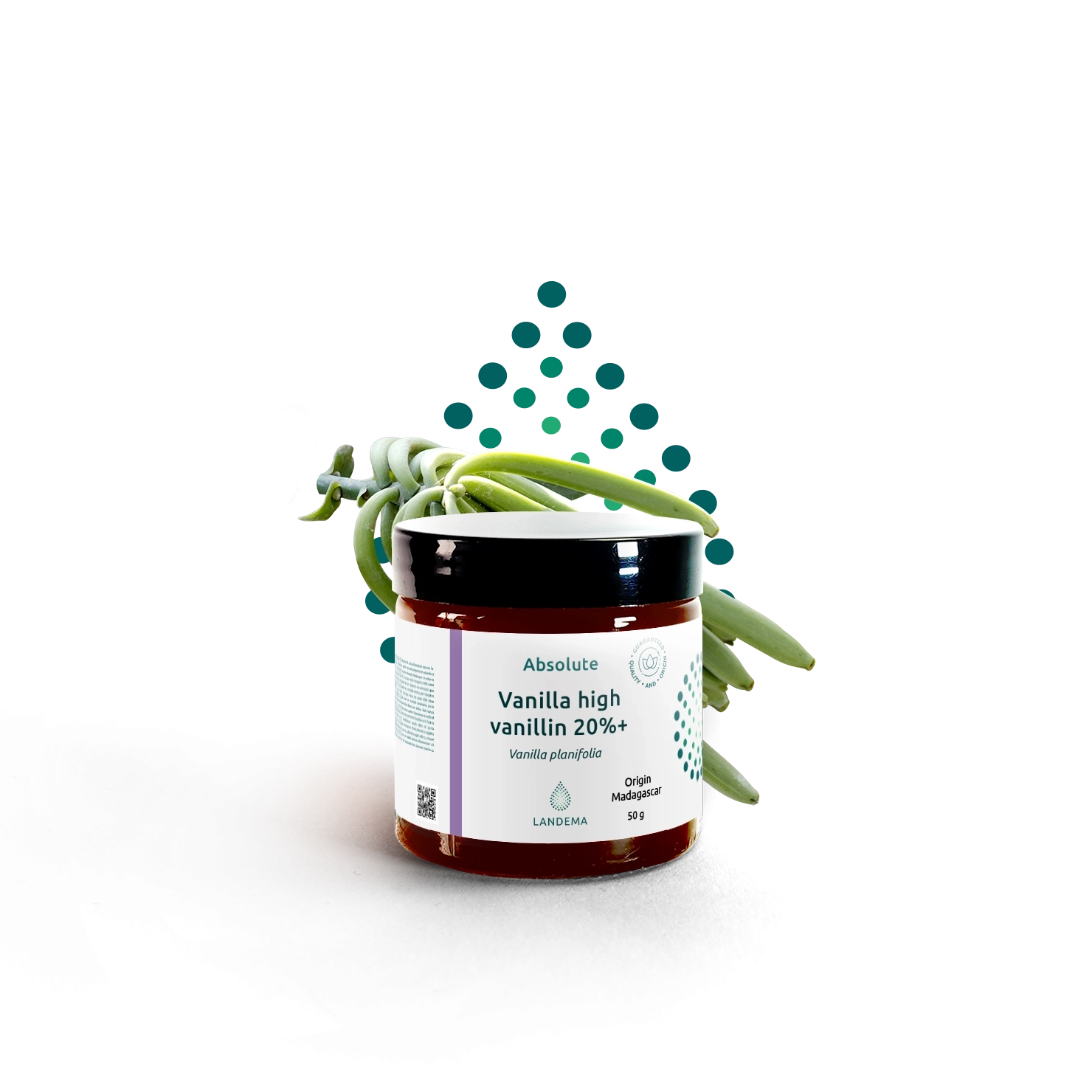
Vanilla high vanillin 20%+
Absolute
- Origin HONDURAS
- Exudate
- Grown on our farms
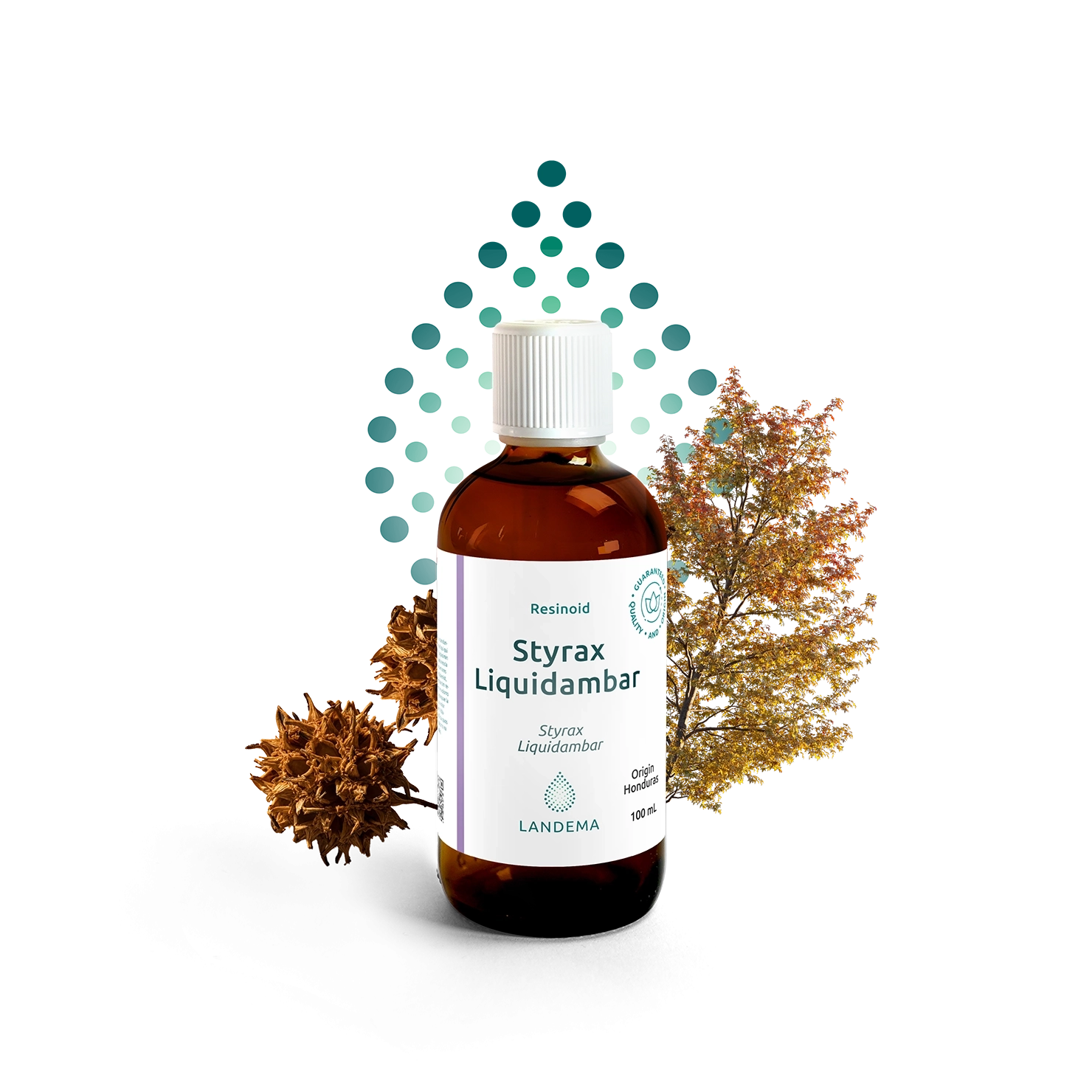
Styrax Liquidambar
Resinoid
- Origin SOMALIA
- Exudate
- Grown on our farms
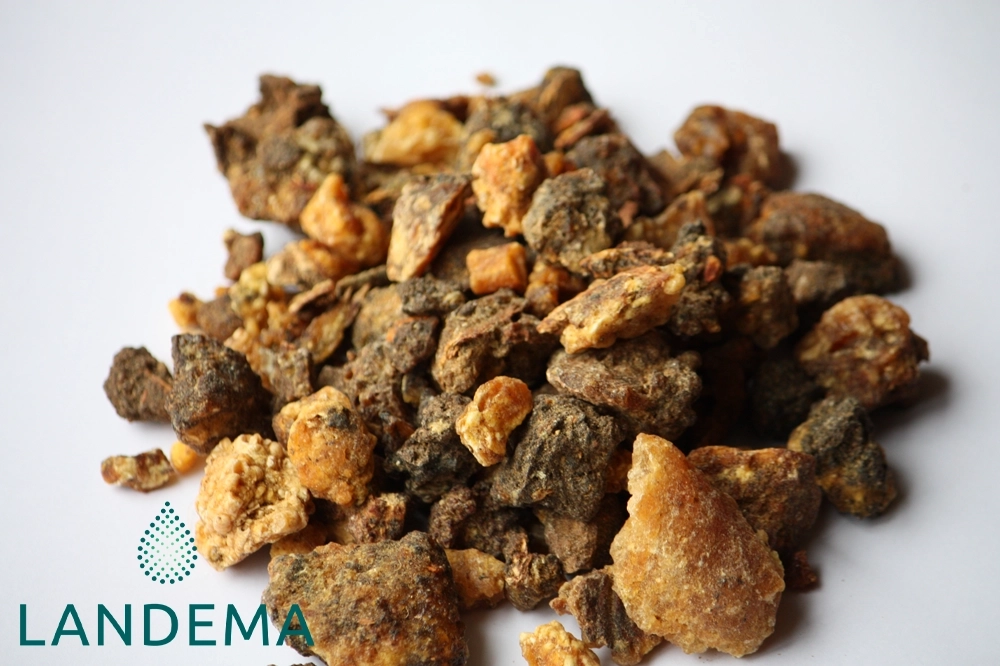
Opoponax washed resinoïd
Resinoid
- Origin FRANCE
- Rhizome
- Signature product
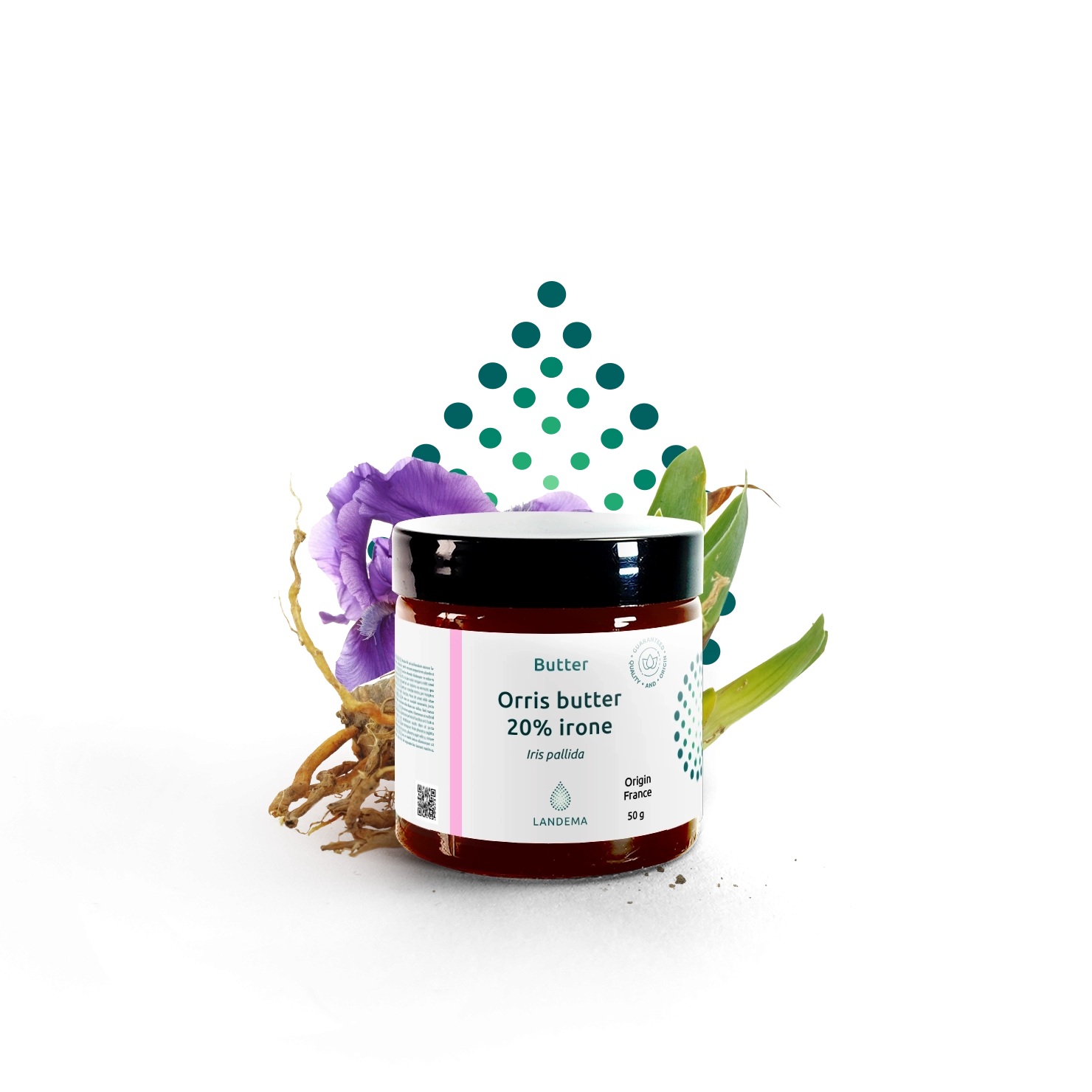
Orris butter 20% irone
Butter
Your wishlist

